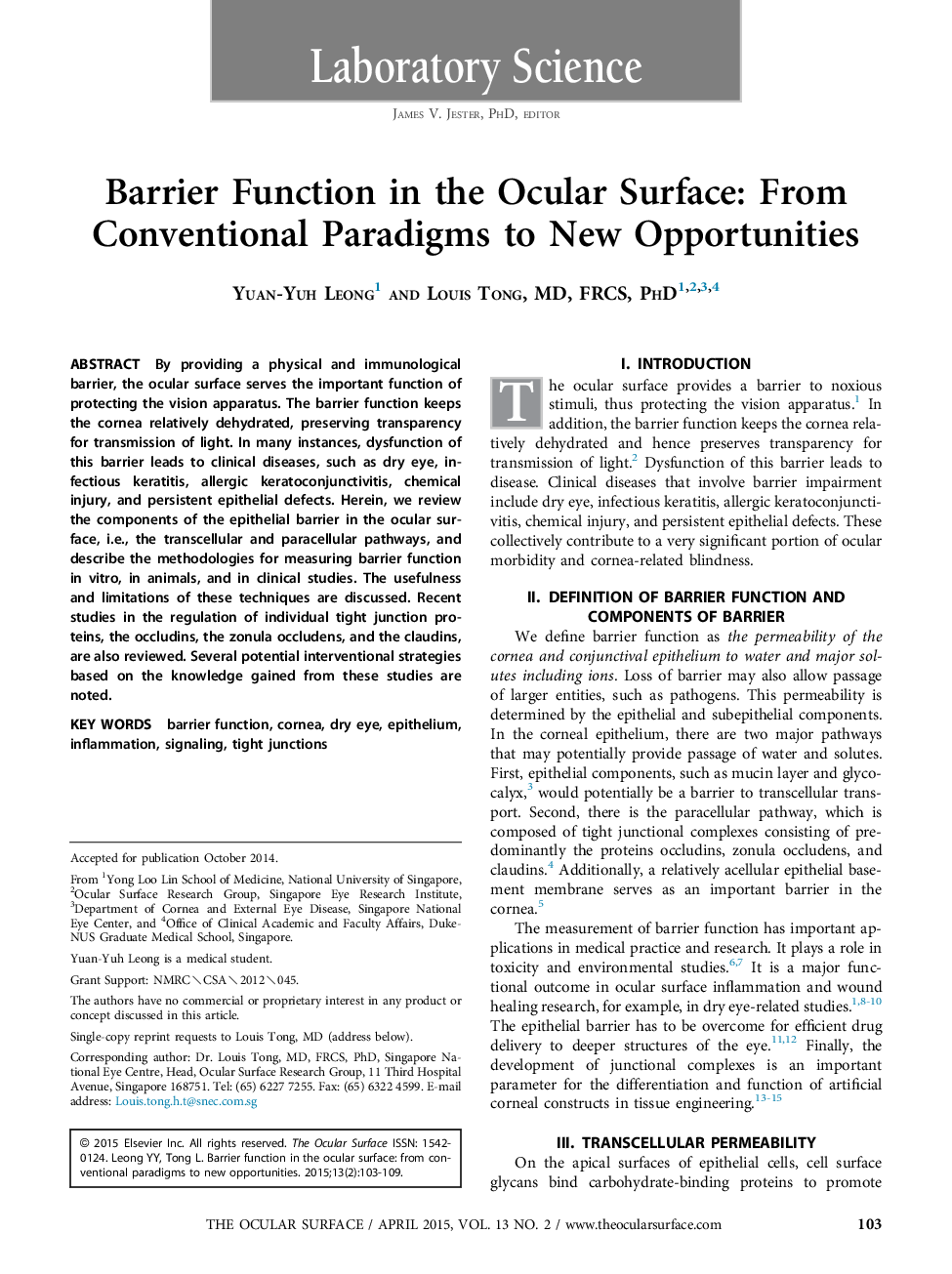| Article ID | Journal | Published Year | Pages | File Type |
|---|---|---|---|---|
| 2698794 | The Ocular Surface | 2015 | 7 Pages |
By providing a physical and immunological barrier, the ocular surface serves the important function of protecting the vision apparatus. The barrier function keeps the cornea relatively dehydrated, preserving transparency for transmission of light. In many instances, dysfunction of this barrier leads to clinical diseases, such as dry eye, infectious keratitis, allergic keratoconjunctivitis, chemical injury, and persistent epithelial defects. Herein, we review the components of the epithelial barrier in the ocular surface, i.e., the transcellular and paracellular pathways, and describe the methodologies for measuring barrier function in vitro, in animals, and in clinical studies. The usefulness and limitations of these techniques are discussed. Recent studies in the regulation of individual tight junction proteins, the occludins, the zonula occludens, and the claudins, are also reviewed. Several potential interventional strategies based on the knowledge gained from these studies are noted.
